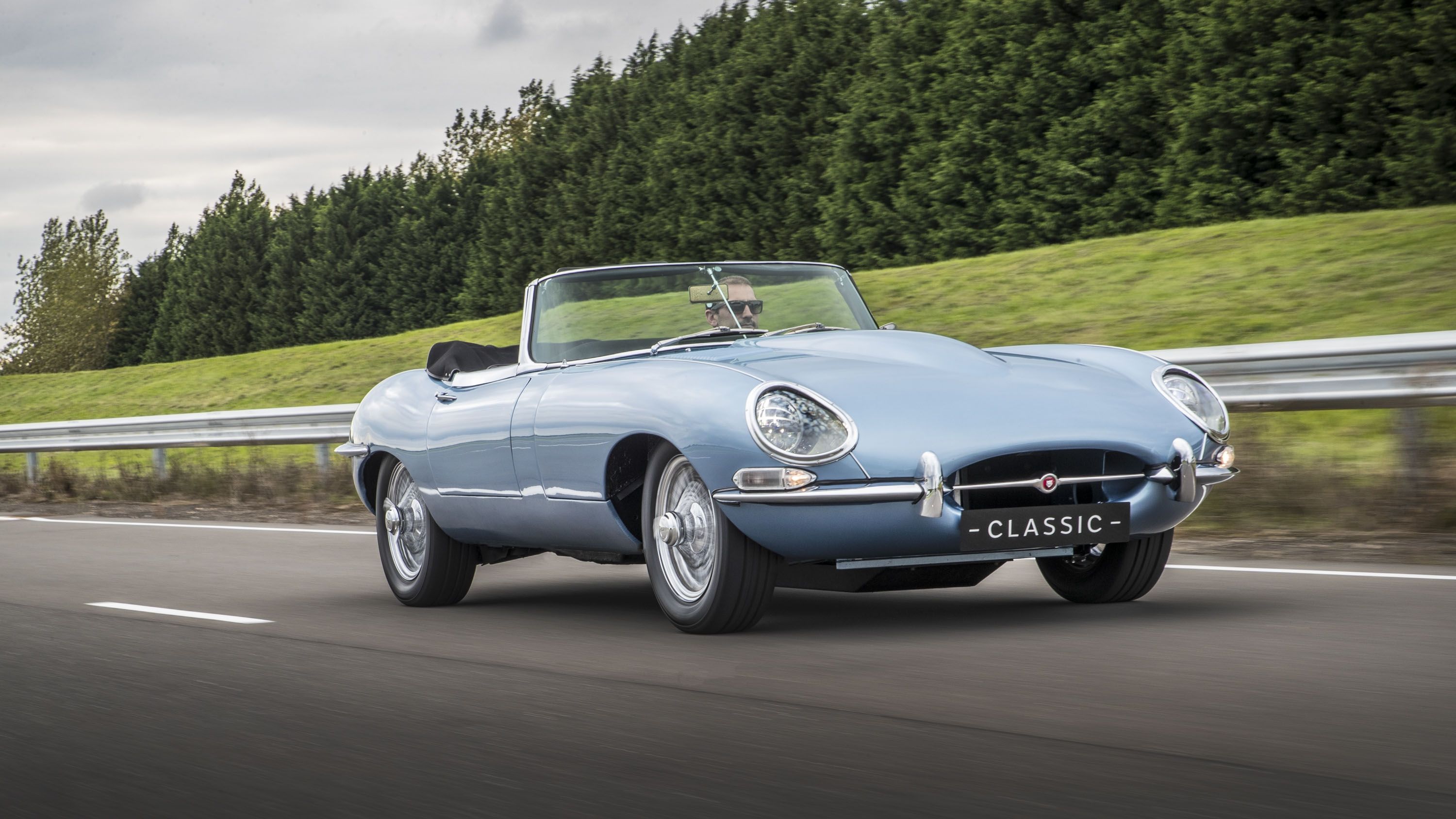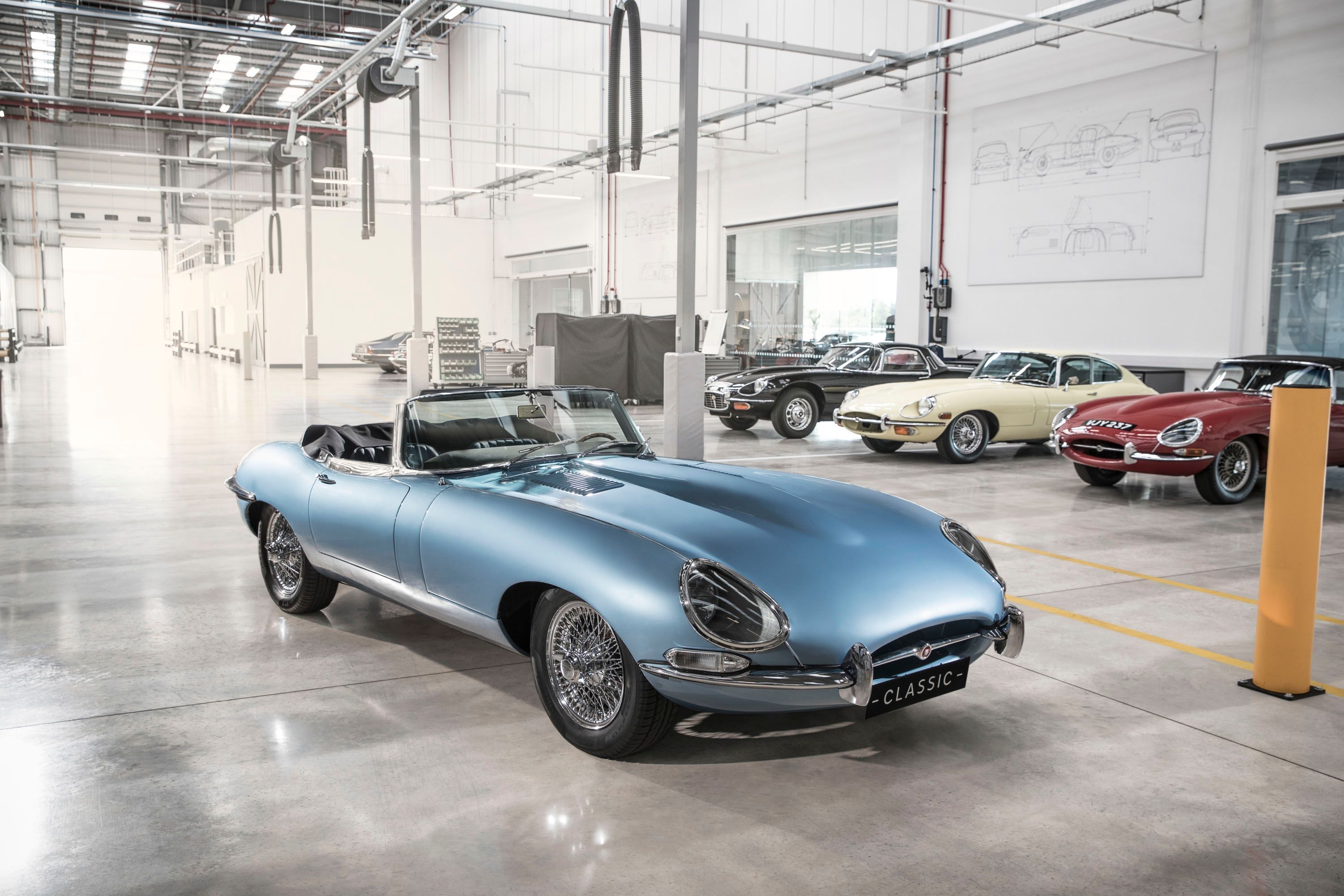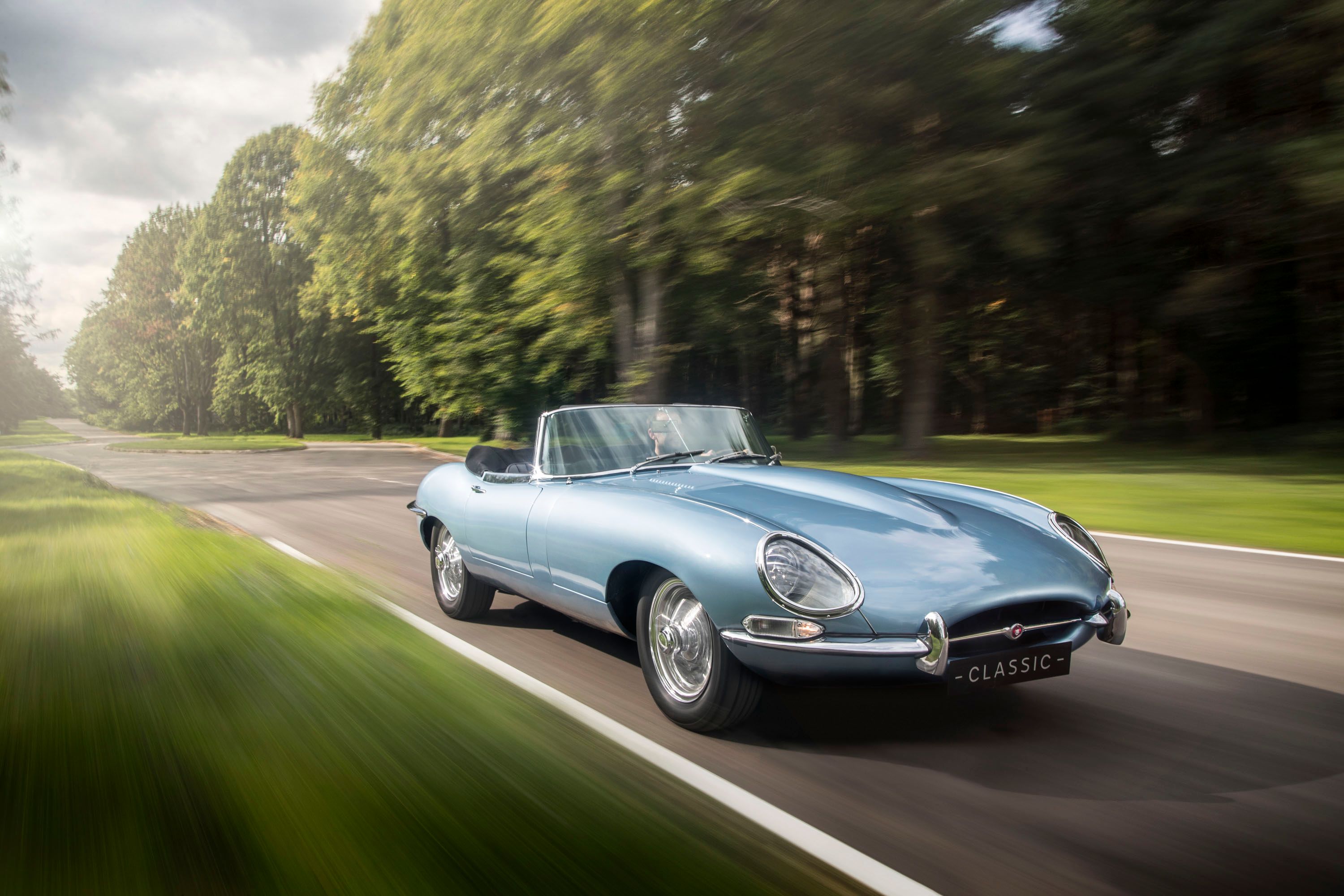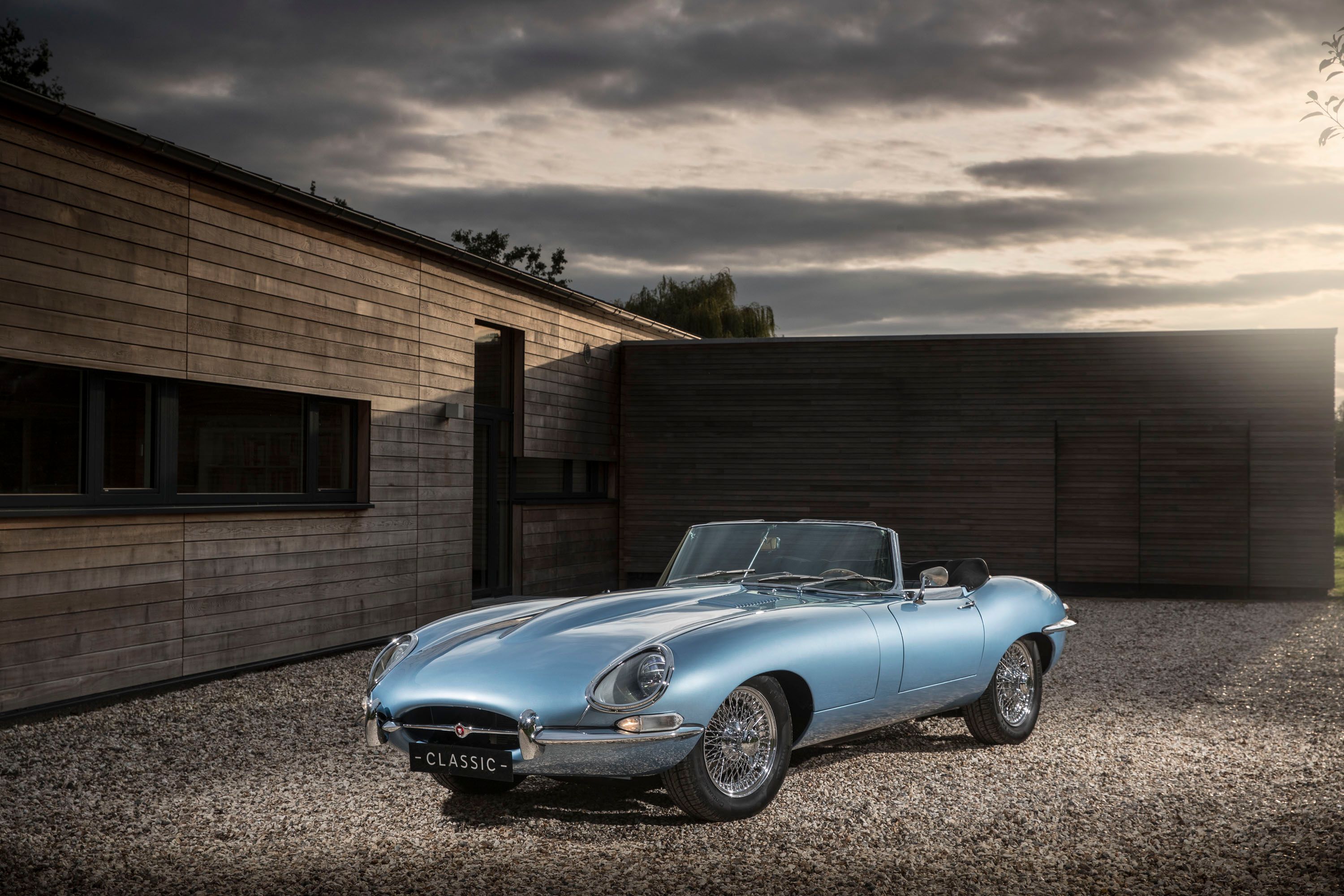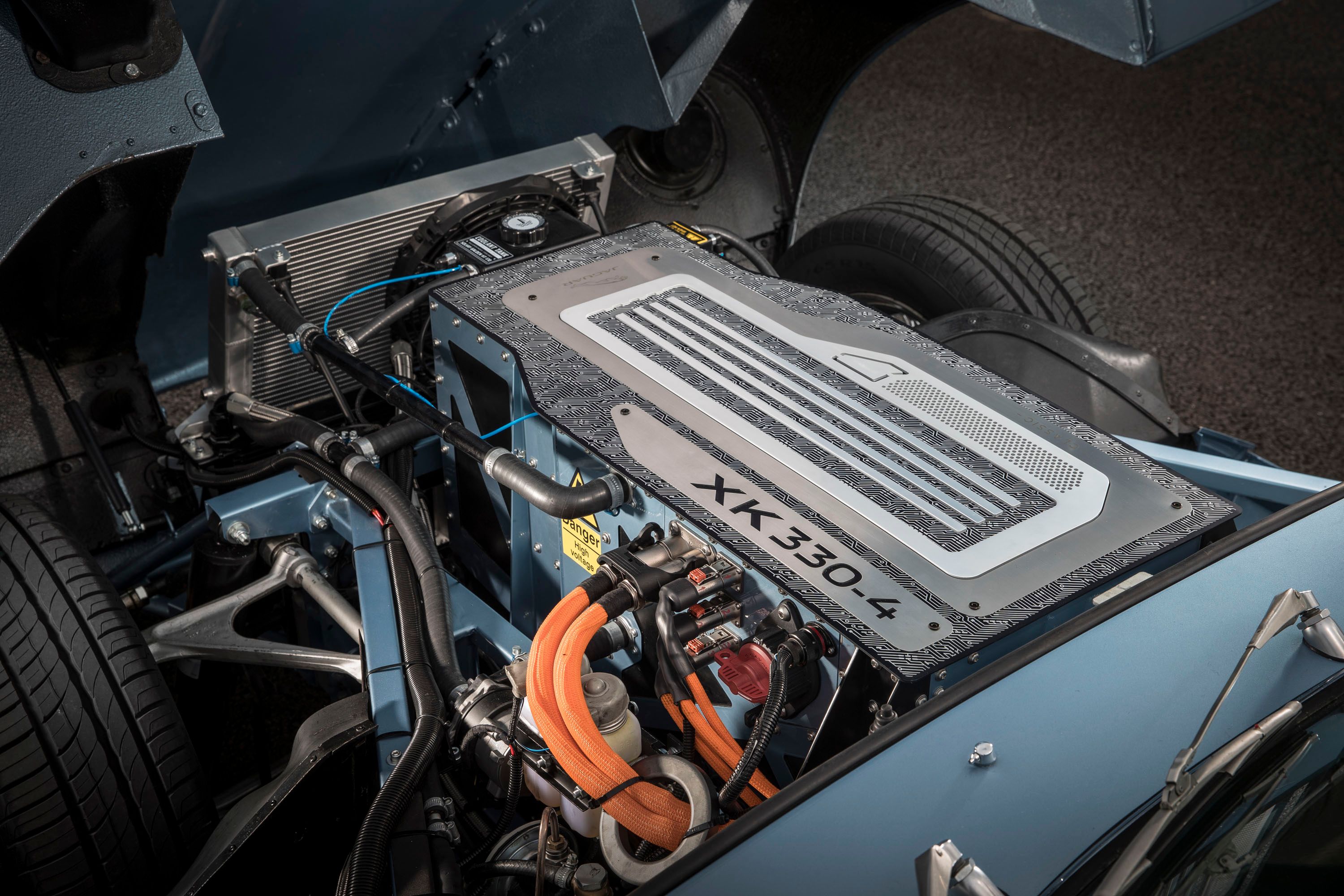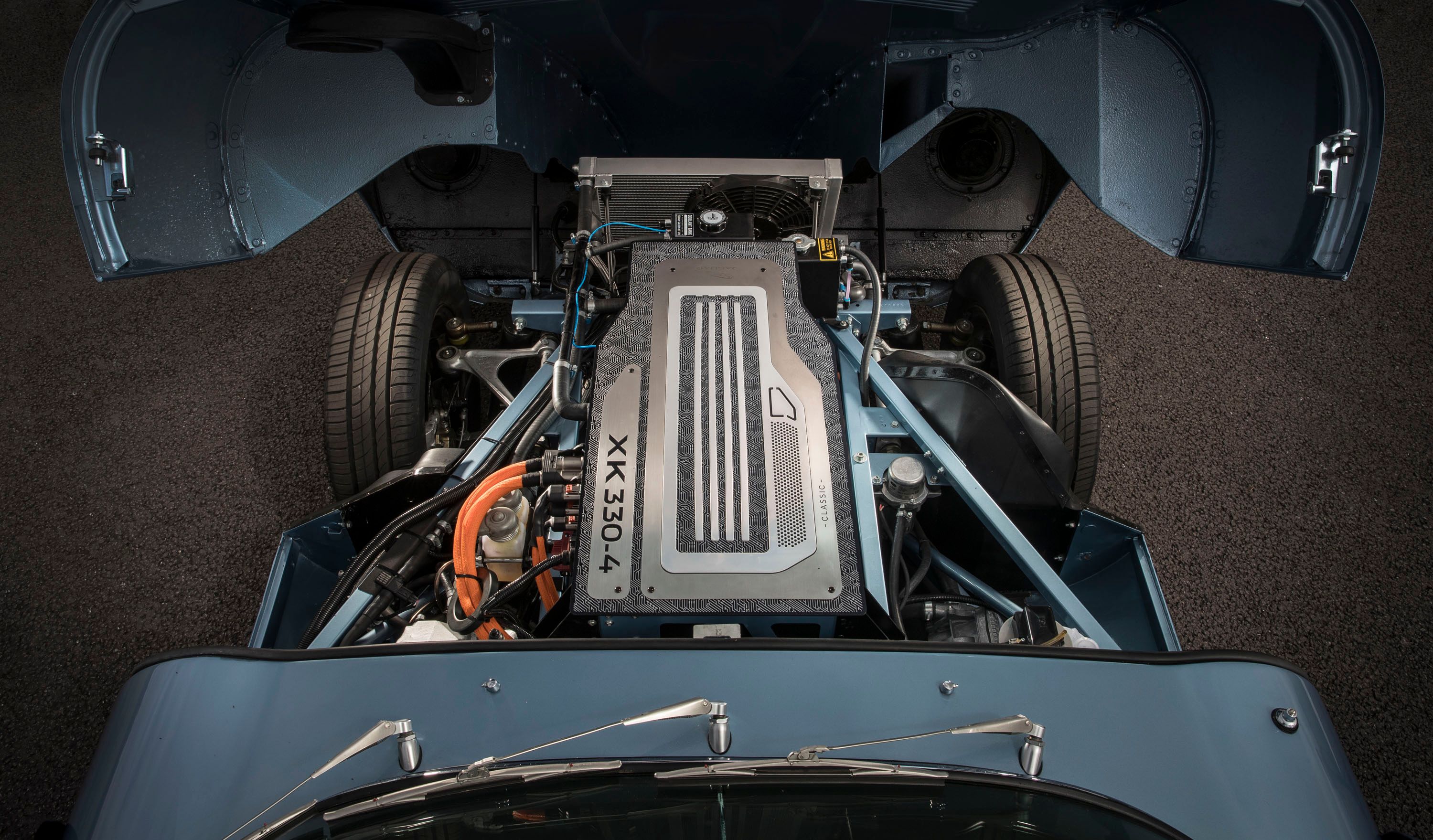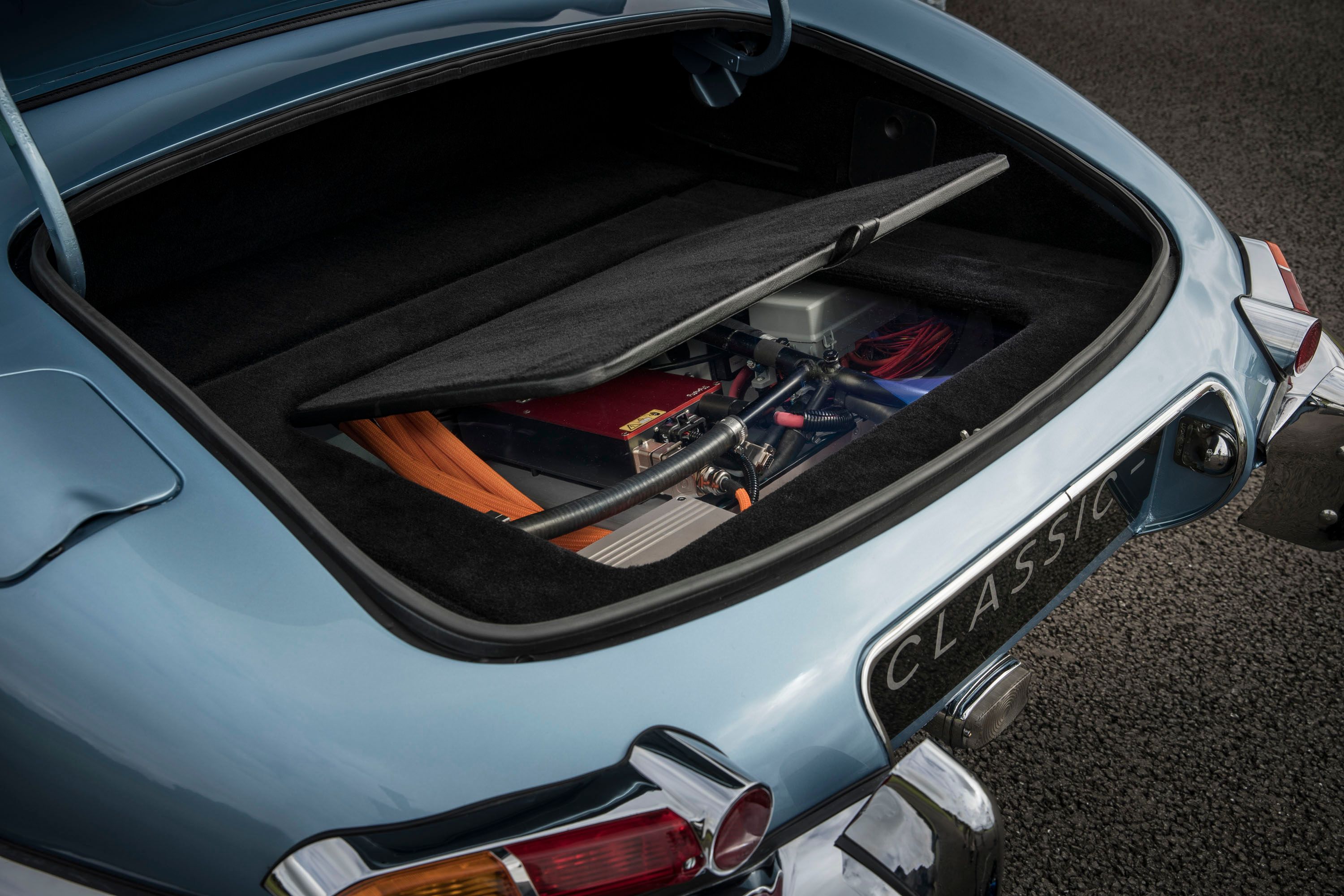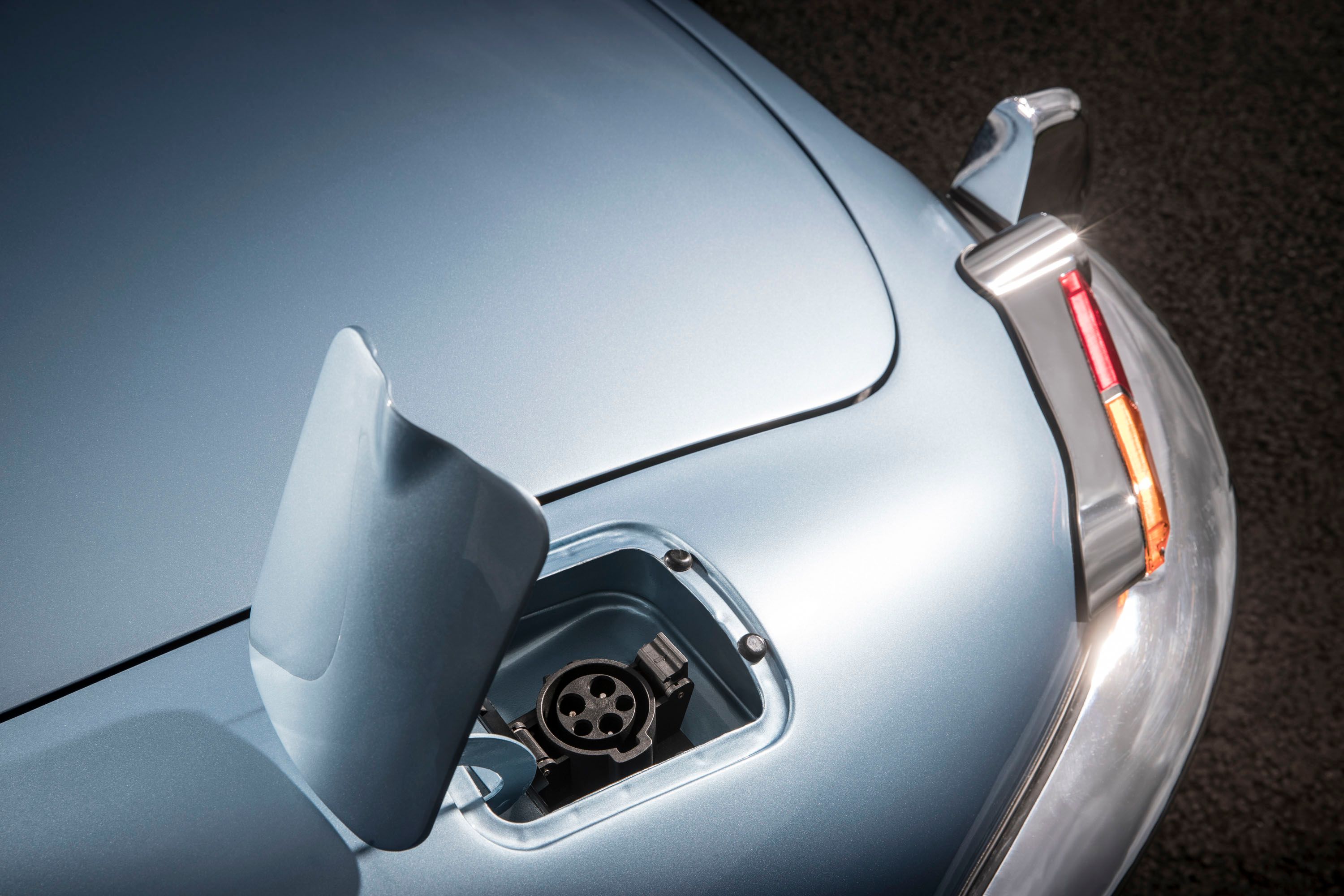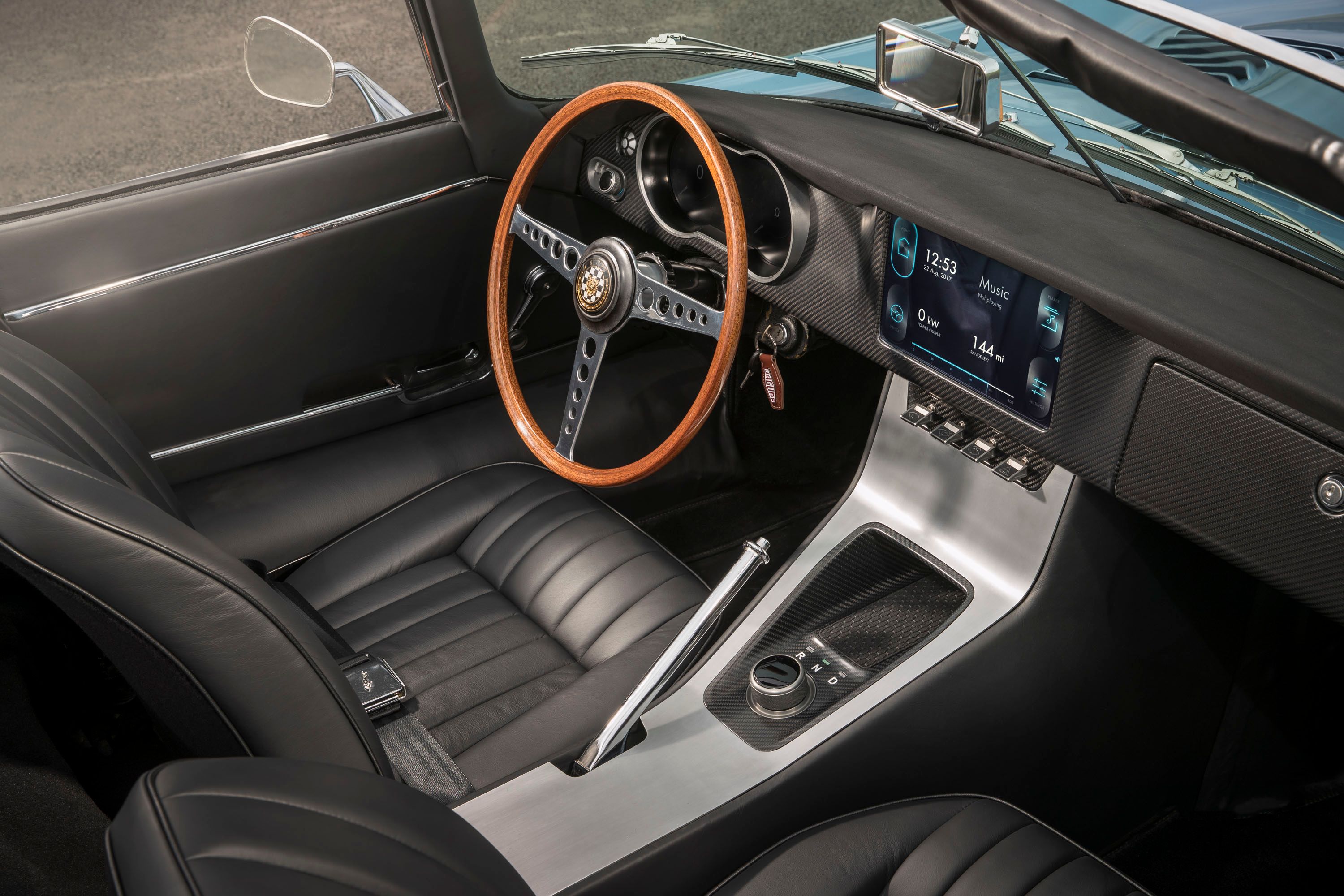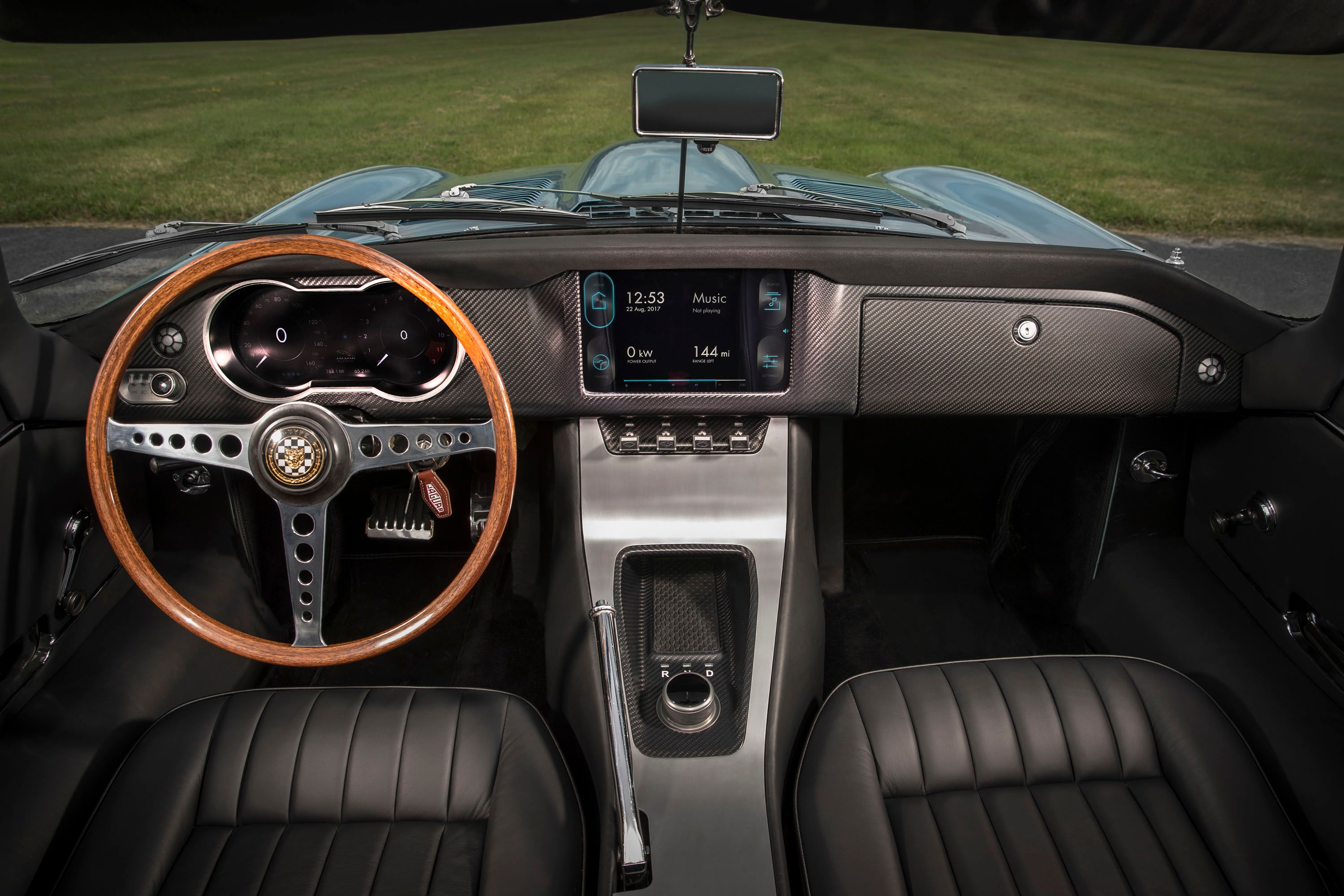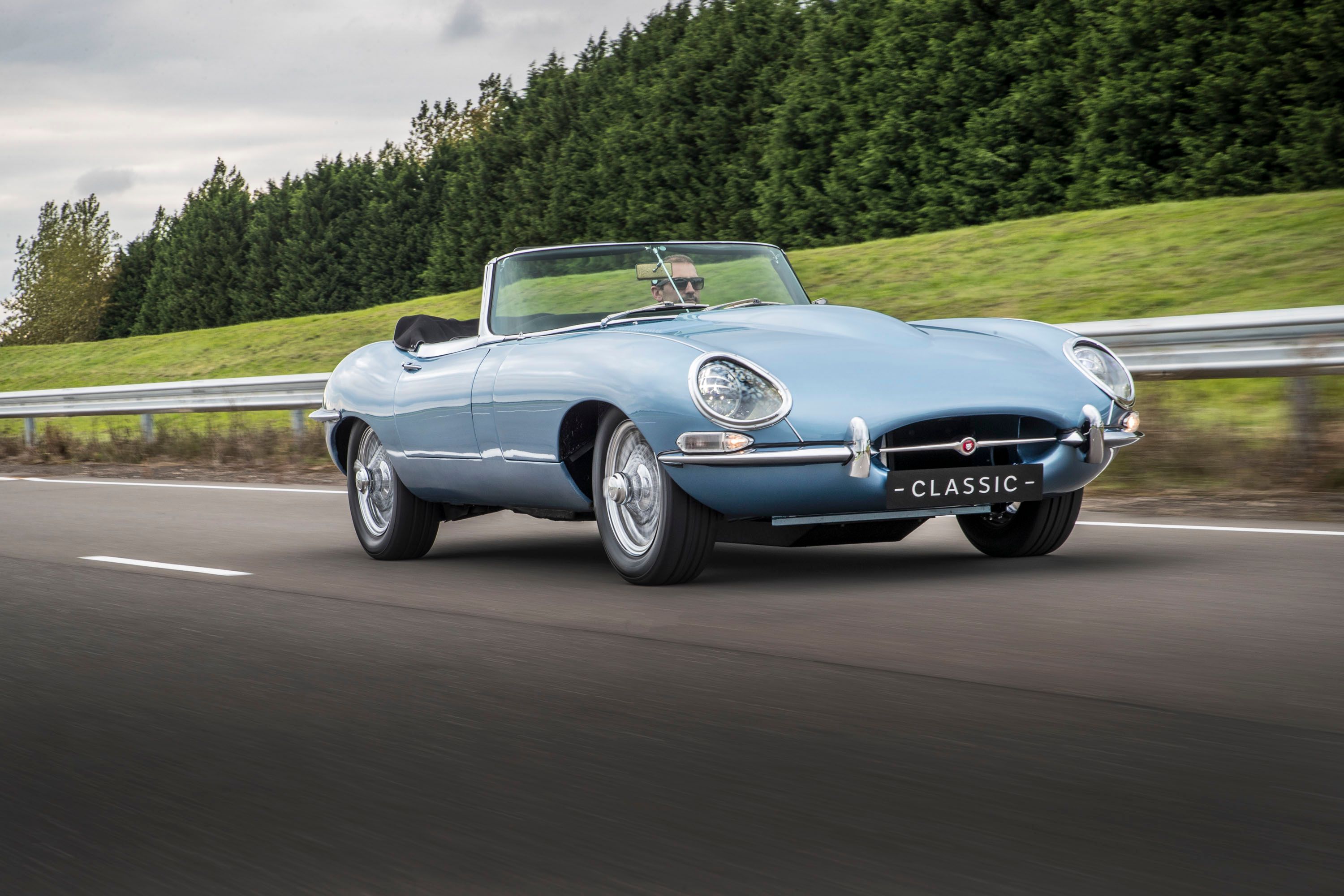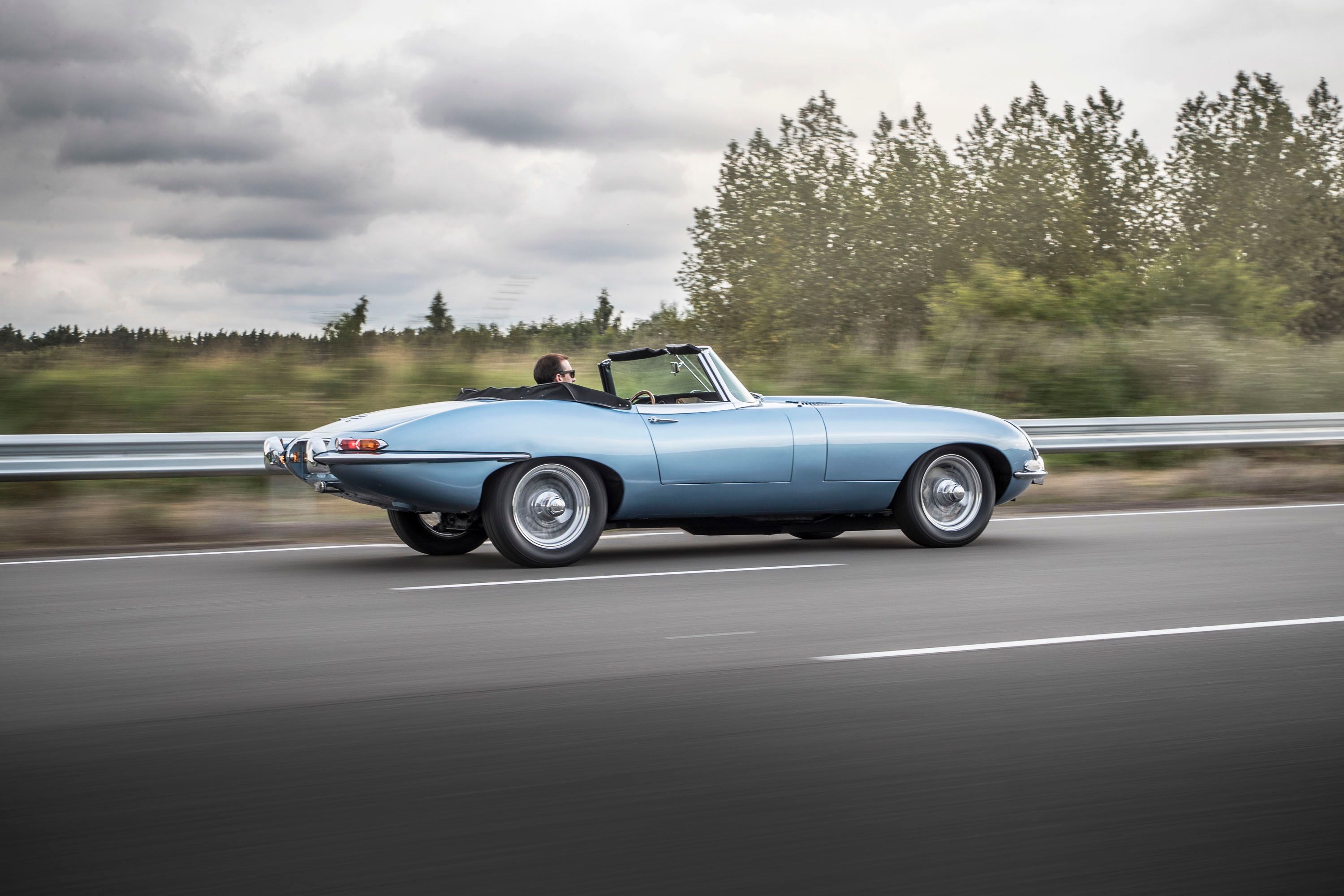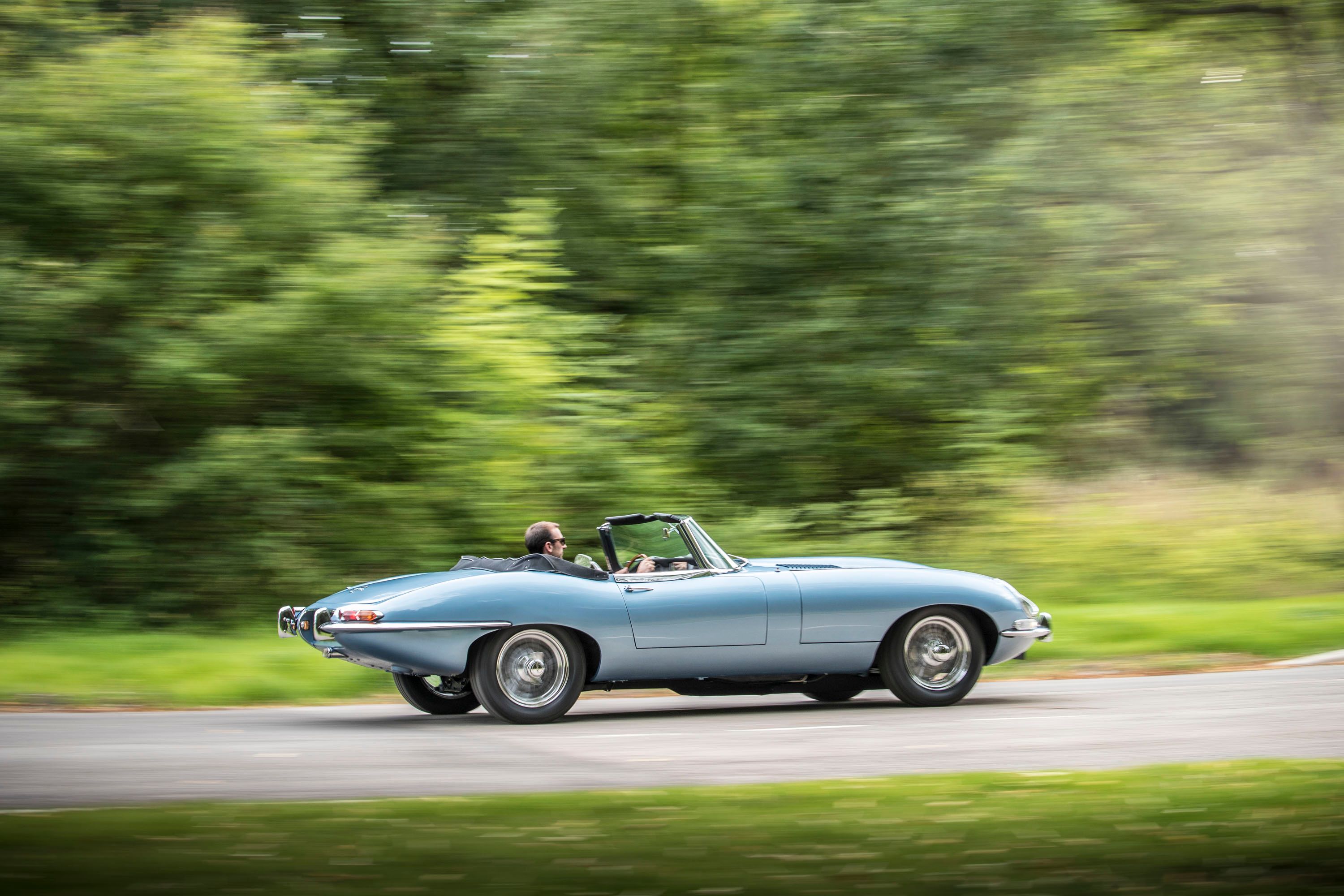Back in March of 1961, Jaguar unveiled the E-Type, and it wasn’t long before the world fell in love with its long hoodline, curvaceous hips, and sonorous 3.8-liter six-cylinder soundtrack. Enzo Ferrari, a man with no shortage of good looking metal at his disposal, remarked that it was the “most beautiful car ever made,” and in the more than half century that followed its release, the E-Type has remained a mainstay of automotive splendor for enthusiasts across the globe. These days, the E-Type has served as the basis for a variety of special editions and reimaginings, but now, JLR is taking its iconic two-door into uncharted water. Say hello to the E-Type Zero, an all-electric iteration that promises the same distinctive driving experience as the original, but with no gasoline involved.
Scheduled for presentation at the Jaguar Land Rover Tech Fest on September 8th, the E-Type Zero was restored and converted by Jaguar Land Rover Classic Works in Coventry, which, JLR points out, isn’t far from “where the E-Type was born.” Based on a 1.5 Series Roadster from 1968, the Zero is an almost completely all-original spec, except for the powertrain, obviously. “Our aim with E-Type Zero is to future-proof classic car ownership,” says Tim Hanning, Director at Jaguar Land Rover Classic. “We’re looking forward to the reaction of our clients as we investigate bringing this concept to market.” That’s right, folks – a production iteration could be in the works. Read on for the details.
Continue reading to learn more about the Jaguar E-Type Zero.
2017 Jaguar E-Type Zero
- Make: Array
- Model: 2017 Jaguar E-Type Zero
- [do not use] Vehicle Model: Array
Exterior
Outside, the E-Type Zero looks very close to the original roadster. The same lines are present, with lovely curving fenders, a bulging hood line, plumped-up fenders, chromed-out trim details, wire wheels, and a triangular rear end. The stance is horizontal and low, and it’s still abundantly obvious why Enzo Ferrari lauded the E-Type with such high praise.
There are, however, a few small details changed that make sense on an EV. For starters, the fascia received upgraded headlights, with LED’s added to the rounded housings to help increase overall “energy efficiency.” Furthermore, the rear filler cap flips up to reveal a five-pronged plug to keep the batteries charged.
Beyond that, though, the E-Type Zero looks the part of Jaguar’s classic roadster to a tee.
Interior
Step into the interior, and the E-Type Zero looks to make a bigger break from the original design. While the layout is reminiscent of the classic, the dash and central tunnel look as though they were created from carbon fiber, while the traditional gearshift was replaced by a knob with three settings – “Reverse,” “Neutral,” and “Drive.” Next to the driver is a polished hand brake lever, while a quartet of toggle switches on the stack provides additional user inputs.
Further upgrades include a digital screen mounted in the dash, plus a digital replacement for the analogue gauges behind the steering wheel. The new instrumentation does, however, get a “Classic” design scheme.
The rest of the set-up is as you’d expect, with the traditional seats covered in black hide, hand cranks for the windows, a large, three-spoke, wood-rimmed steering wheel, and a real mirror mounted to the windshield (as opposed to a third screen projecting a feed from some rear-mounted camera, that is).
Drivetrain
As you would probably expect, Jag pulled from its existing all-electric vehicle lineup to build the E-Type Zero, including the I-Pace, the automaker’s first all-electric SUV. Specs include a 220-kW powertrain juiced by a 40-kWh battery pack, with power routed through a new prop shaft, finally mating to an original E-Type differential in the rear before reaching the ground.
All told, the all-electric power makes good on the E-Type’s promise of speed. In fact, the new powertrain makes the roadster even faster than its six-cylinder-equipped variants, running the the 0-to-62 mph sprint in only 5.5 seconds, besting the Series 1 E-Type by 1 second in the test. Range per charge is 170 miles, with a full battery achieved in six to seven hours, which isn’t great, but hey – this isn’t supposed to be a commuter car, right? Odds are you’ll be leaning on the go pedal pretty heavily, so range doesn’t really matter all that much.
Tim Hanning reiterates that the car could go quicker, but Jaguar Land Rover Classic chose not to push it too far. “In order to seamlessly combine the new electric powertrain of E-Type Zero with the dynamic set-up of the original E-Type specification, we have limited the vehicle’s power output. We believe this provides the optimum driving experience.”
“But wait a second,” you might be asking. “How can all-electric power integrate with the original E-Type specification? Doesn’t the new powertrain clash with the old school bones?”
The answer – not as much as you might think. In fact, Jaguar Land Rover Classic did an amazing job integrating the new tech into the dated chassis.
Helping the issue is the design of the powertrain components. Interestingly, the large lithium-ion battery pack sports similar dimensions as the original XK six-cylinder gas engine, and thus was placed in the same spot as the original engine. Meanwhile, the electric motor was placed behind the pack, that is, the original E-Type’s gearbox location, thus creating the same weight distribution as the original car.
With that original weight distribution on board, Jag didn’t need to modify the suspension or braking system, which means the E-Type Zero “drives, handles, rides and brakes like an original E-Type.” Cool.
What’s more, because the new electric powertrain is so similar in dimensions and weight as the XK drivetrain, Jag says the electric components could be fitted to virtually any car that came equipped with an XK engine. And since the XK was in production between 1949 and 1992, that includes a lot of cars.
Finally, the electric powertrain and new components actually manage to cut out 46 kg (101 pounds) of heft compared to the original roadster.
Competition
Infiniti Prototype 9
Alright, so it’s not like consumers will need to choose between the Jaguar E-Type Zero and Infiniti Prototype 9 when it comes to meeting their electrified old-school motoring needs, but I thought this recently unveiled battery-powered throwback deserved a mention here, given the similarities between the two vehicles. You see, Infiniti wasn’t around in the pre-war era, but if it was, this is what it thinks it would have produced when it came to single-seat racers. Bearing the traditional Infiniti grille and slender, open-wheel proportions, the Infiniti Prototype 9 looks the part of a classic performance machine. However, under the polished silver skin is a 30-kWh battery and electric motor, blessing the RWD vehicle with 148 horsepower, 236 pound-feet of torque, and a 0-to-62 mph time of 5.5 seconds.
Read the full review on the Infiniti Prototype 9.
Conclusion
While enthusiasts will no doubt miss the iconic six-cylinder wail of the original E-Type’s gas engine, we think this thing is pretty damn cool. The fact it replaces the XK so well in terms of size, shape, and weight is particularly interesting, and we’d jump at any opportunity to take the E-Type Zero for a spin to test it out for ourselves.
It’s also quite interesting that Jag says it’s considering “bringing this concept to market.” What exactly that means, we’re not sure, but it is possible Jag could be eyeing a production all-electric F-Type.
And why not? The Cat Badge is already looking into doubling down on all-electric offerings, and a battery-powered sports car would do well to cement the brand’s sporting intentions within the EV sphere.
Would such a thing sell? We’d have to see some specs first, but it’s definitely within the realm of possibility. Let us know your thoughts in the comments below.
References
Jaguar E-Type
Read our full review on the Jaguar E-Type.
Jaguar I-Pace
Read our full review on the Jaguar I-Pace.
Infiniti Prototype 9
Read our full review on the Infiniti Prototype 9.

